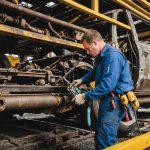Understanding Child Booster Seat Safety
Ensuring child passenger safety is crucial, and using child safety seats plays a pivotal role. Booster seat safety is especially important as children transition from traditional car seats. Booster seats elevate children so that seat belts fit properly, reducing the risk of injury during a vehicle collision.
Importance of Using a Booster Seat
The necessity of booster seats is underscored by their ability to offer optimal protection for children who have outgrown car seats but are not yet large enough for a standard seatbelt. These seats ensure that the lap belt lies correctly across the upper thighs and the shoulder belt across the chest, rather than the stomach or neck.
This might interest you : Top Antifreeze Options for Winter Performance in British Diesel Trucks
Overview of Laws and Regulations
The use of booster seats is governed by vehicle safety regulations that vary by location. Many jurisdictions mandate the use of booster seats for children until they reach a certain age, weight, or height. This legislation aims to standardize child passenger safety practices and minimize injuries in the event of a crash.
Common Misconceptions
Misunderstandings about booster seat usage often arise, particularly concerning classic vehicles. Some believe these vehicles do not require booster seats due to older seatbelt designs. However, safety standards apply universally, and adaptations can be made to incorporate booster seat safety effectively, even in classic models.
Topic to read : Ultimate Guide to Installing a Roof Cargo Box on Your British SUV for Maximized Storage Space
Compatibility of Booster Seats with Classic British Cars
Classic British cars offer a nostalgic charm, but when it comes to child safety, ensuring the compatibility of modern booster seats can be a challenge. Factors such as non-standard seat sizes and unique interior designs affect the compatibility of booster seats with these vehicles. Often, older cars lack the universal anchorage systems found in contemporary models, making the installation of booster seats more complex.
A key consideration is the seat belt configuration. Many vintage vehicles are equipped with lap belts instead of the full three-point seat belts needed for secure booster seat installation. For optimal safety, it is advisable to seek retrofitting solutions. Retrofitting involves installing modern seat belts that accommodate modern child safety seats, significantly enhancing the protection offered.
When looking for booster seats that fit, it’s important to choose models known for their versatility and adjustability. Some booster seats are specifically designed to work well with the limited space and unique seat structures found in classic cars. Before purchase, check the specifications and perform a trial fitting if possible.
Achieving a balance between maintaining the classic charm and ensuring safety involves careful consideration and modification. Keeping these factors in mind will help ensure that your vintage vehicle can safely accommodate younger passengers.
Step-by-Step Guide for Installing a Booster Seat
Choosing the right booster seat is only the first step. Proper installation ensures safety for your child, and when done right, it will provide the necessary protection in case of an accident. Understanding safe installation practices will instill confidence in your choice as a caregiver.
Preparing the Vehicle
Before starting the booster seat installation, clean the seat area thoroughly. This ensures the seat sits flush and secure, without any obstructions like crumbs or debris that might affect stability. Remove any unnecessary items on the seat or floor that could obstruct the booster seat or its supports.
Positioning the Booster Seat
Determine the best seating position for the booster seat within your vehicle. Typically, the back seat is the safest location, preferably in the center as it offers extra protection in case of a side impact. Ensure there’s enough room for proper alignment with the seat belt, avoiding any tilting or movement that could compromise safety.
Securing the Seat Belt
Once positioned, securing the seat belt properly is crucial for the safe installation of the booster seat. Depending on your vehicle and the booster seat model, use the seat belt or the LATCH system effectively. Ensure the belt is threaded through the correct path and pulled taut, lying flat against the seat and the child’s body. The seat should not move more than an inch side-to-side or front-to-back once secured. Following these steps will ensure your child’s safety and comfort during travels.
Expert Tips for a Secure Installation
Ensuring the proper installation of your booster seat is crucial for safety. Begin by checking the seat stability after installation. A secure booster seat should not move more than an inch side-to-side or front-to-back when tested with a firm push. Examine the seat belt’s path and locking mechanism—everything should fit snugly.
To test the fit, ensure the seat rests firmly against the vehicle’s back seat, and the child’s belt is positioned correctly across the shoulder and lap. Use the car’s anchoring system, if available, for added security. A booster seat that does not shift during normal driving manoeuvres indicates a secure fit.
The importance of rechecking the installation cannot be overstated. Over time, vibration from daily driving or repositioning the booster seat can cause it to become loose. A safety expert recommends rechecking the seat’s stability and fit after every use. Regular checks ensure continued compliance with safety guidelines and protect your child from potential harm in the event of sudden stops or collisions.
By staying vigilant and periodically reviewing these installation tips, you can maintain a safe and secure booster seat for your child’s protection.
Addressing Challenges with Classic Vehicles
When it comes to installing booster seats in classic vehicles, unique issues often arise. These vehicles typically have non-standard seat arrangements that can complicate the process.
Non-standard Seat Arrangements
Classic cars were manufactured in an era before modern safety standards, leading to non-standard seat designs and dimensions. This can pose installation challenges for contemporary booster seats. These vehicles might lack necessary features such as adjustable headrests or anchor points that modern booster seats require for a secure fit. Consequently, drivers need to explore alternative solutions for securing the booster seat properly.
Retrofitting for Safety
To enhance the safety of a child in a classic car, retrofitting with modern safety features is often necessary. Retrofitting might include installing compatible seat belts that accommodate booster seats. This approach allows for improved adherence to modern safety standards, ensuring that the child is securely fitted in the seat. It’s essential to verify compatibility between the retrofitted components and the booster seat model to address any potential classic vehicle issues.
Expert Recommendations
If uncertain about tackling these installation challenges, consulting with professionals experienced in classic vehicles is highly recommended. They can offer guidance on best practices and assist with retrofitting, ensuring proper safety is maintained. These solutions cater to the unique challenges presented by classic vehicles.
Legal Requirements for Booster Seats
Navigating the legal landscape of booster seat laws for child passengers can be quite daunting, as these regulations vary significantly across different regions. It’s crucial for parents and guardians to be aware of regional regulations to ensure compliance. In most regions, laws dictate that children must use booster seats until they reach a certain age, weight, or height. For example, many areas require booster seats for children under the age of eight or until they are at least 4 feet 9 inches tall.
Failure to comply with these laws can lead to penalties, such as fines and points on a driver’s license. The severity of these penalties can vary, with some regions imposing stricter consequences to emphasize the importance of child safety.
To stay informed about the specific regulations in your area, it is advisable to consult reliable resources. Websites like those of local government or traffic safety organizations frequently provide updated information on booster seat laws. Additionally, consulting with local law enforcement or community safety departments can offer guidance tailored to your specific region. This proactive approach not only ensures compliance but considerably enhances the safety of child passengers on the road.
Visual Aids and Additional Resources
Finding the right resources is crucial when it comes to installing booster seats safely and effectively. Let’s delve into the available tools designed to make installation easier and more precise.
Diagrams for Installation
Visual aids, such as booster seat diagrams, provide clear guidance on how to correctly secure a booster seat in various types of vehicles. These diagrams typically include labelled parts of the seat and instructions for correct positioning, which are essential for maintaining the safety guidelines. When using diagrams, ensure you refer to your vehicle’s specific make and model, as well as the booster seat brand, as installation methods may differ.
Video Resources
Complementing diagrams, video resources serve as installation resources, offering visual step-by-step guidance. Recommended videos demonstrate best practices and common mistakes to avoid, enabling you to follow along with ease. Such resources often include expert tips, further enhancing your confidence in achieving a secure installation of booster seats.
Safety Checklists
A safety checklist serves as a handy tool, helping you double-check that everything aligns with established safety guidelines. Printable checklists are practical to have on hand, ensuring that you don’t overlook vital safety measures. These provide a holistic approach to the process, from seat selection to installation, ensuring comprehensive compliance and maximum safety for young passengers.











